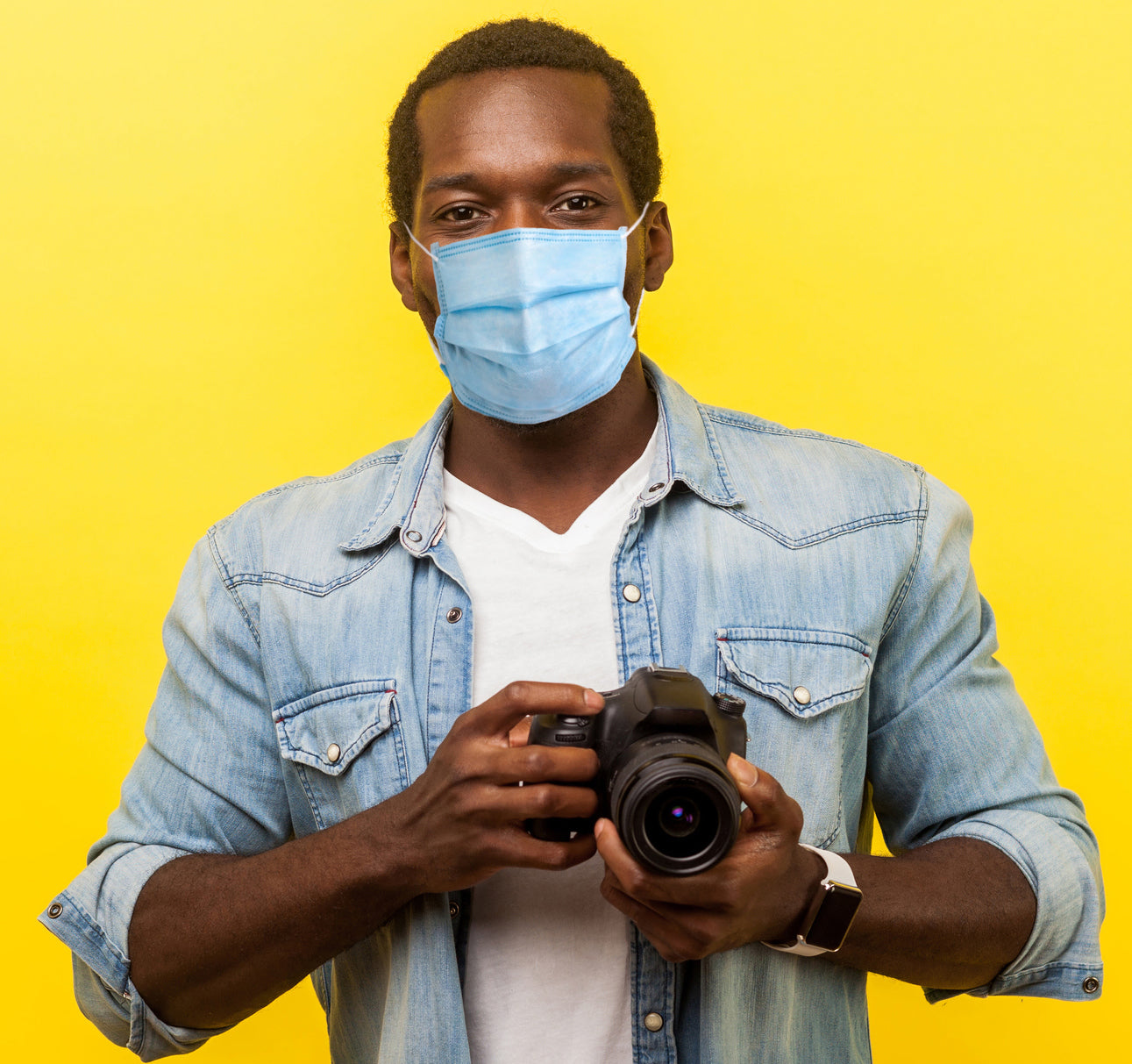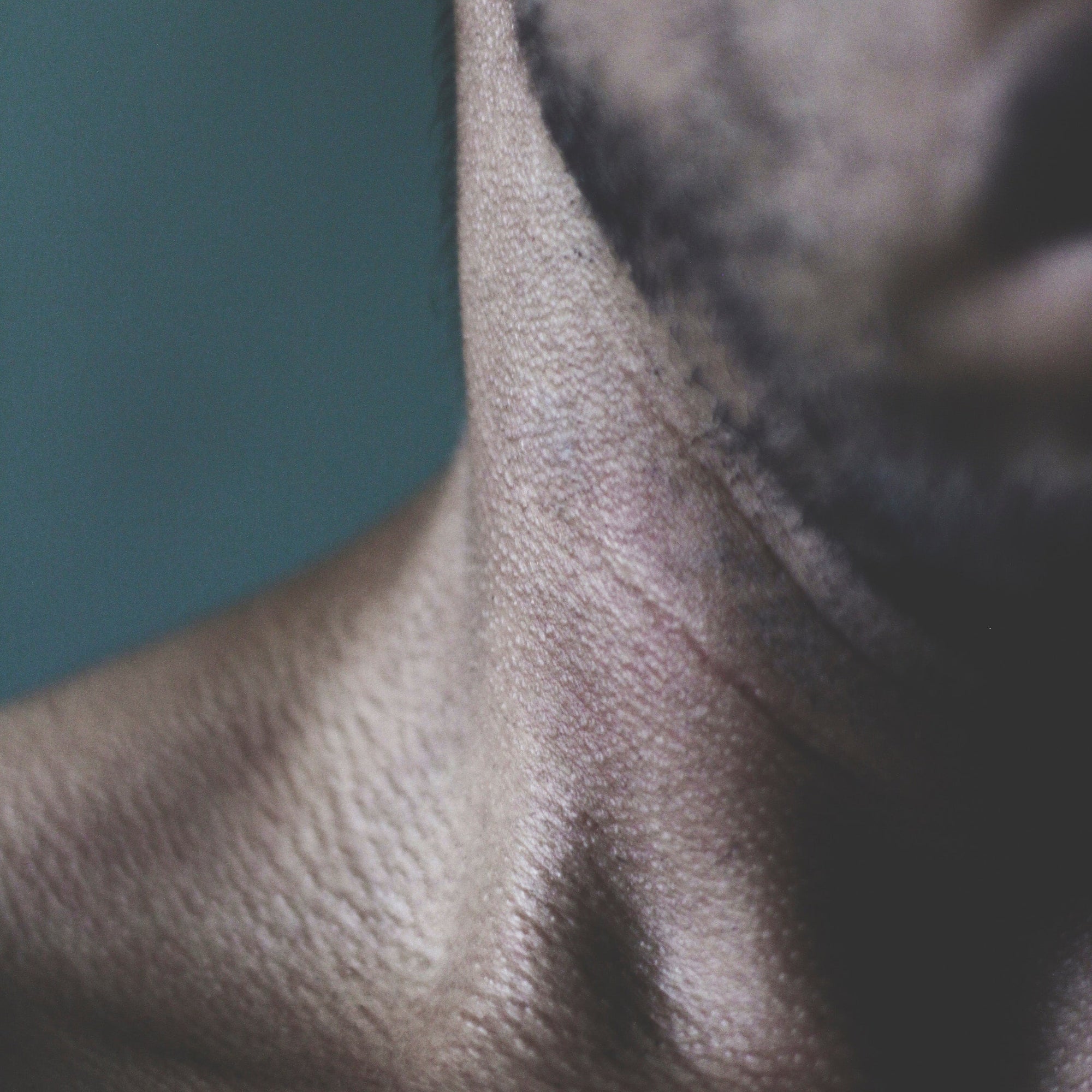‘Maskne’ is a very real thing!
Wearing a face mask helps protect you and others from COVID-19. It’s a simple step we can all take together to slow the spread of the virus.
But it can cause your face to breakout under your mask and acne to develop…maskne.
Don’t worry though, there’s lots you can do to stop this.
Below we show you what to do before, during and after wearing a face mask to keep your skin looking it’s best, while protecting yourself and all those around you.

Why you're experiencing acne breakouts under your face mask
Whether you’re a front line medical worker wearing personal protective equipment (PPE) for many hours during long hard days, or wearing a mask as a preventive measure, a protective face mask creates an unfamiliar environment for your skin.
The combination of
- humid heat, produced by breathing, being trapped close to your face
- along with the friction of fabric rubbing against your skin
can disrupt the delicate balance of your skin. You may see redness, skin irritation, rashes and, more obviously, breakouts of acne.
Stress and anxiety
And let’s not forget the stress and anxiety which is linked to this new situation of mask wearing. This can also take a huge toll on your skin and trigger acne breakouts.
But it’s possible to remedy this.
Here’s how to prevent (and treat) acne, breakouts and other unwanted side effects when wearing your mask.
ACTION PLAN: How to beat face mask acne
A simple skin care routine is the best.
The most important thing you can do to avoid acne and prevent breakouts under your face mask is to keep your skin clean and well moisturized.
Here’s what you should do before, during and after you wear your face mask.
BEFORE wearing your mask ….
Clean your face
Always wash your face thoroughly and gently before putting on your mask. This will remove any oil, dirt and bacteria. If you use an exfoliating face wash, like our Daily Face Wash, it will also gently remove dead skin cells and stop your pores becoming clogged. It’s blocked pores that lead to acne breakouts.
Always use lukewarm water, and then pat dry gently with a soft, dry towel that you keep only for you to use (and only on your face!)
Lightly moisturize
It’s really important to keep your skin well hydrated, even if it tends to be oily. Consistently applying moisturizer will strengthen your skin barrier making it better equipped to handle the stress of wearing a protective mask and prevent acne from developing.
Choose a lightweight formula, like our Hydrating Daily Moisturiser, that won’t add extra oil and won’t clog your pores.
The Glycerin and Hyaluronic Acid included will naturally draw moisture into your skin, increasing hydration and keeping your skin both balanced and hydrated throughout the day.
Shaving
The current advice on facial hair is that it is advisable to be clean shaven if you are wearing PPE, in order to ensure a close fit, but it’s not necessary for a face mask.
If you’re shaving for the first time in a long while it can have its downsides – particularly if you have course hair and are prone to razor bumps and ingrown hairs.
The best advice is:
-
Prep your skin well
Splash your face gently with warm (not hot!) water. This will open up your pores and soften your facial hair, so that you can shave with less irritation. A great time to shave is when you’re taking a shower. Your skin will be warm and moist and your hair will be easier to cut. -
Always shave WITH the grain
Shaving with the direction of hair growth will limit irritation, and ingrown hairs. -
Use light, easy strokes applying minimal pressure
Swapping out your blades every 3-4 shaves will ensure an effortless, pain-free cut as well. -
Pat dry gently afterwards
Always pat your face dry very gently after shaving. Your skin is still traumatized, so no rubbing or pulling.
We’ve got more on the best way to shave here – "SHAVE: 9 tips to give you a pain-free shave".
Barrier Cream
If you know already that the face mask will rub at certain friction points you can apply a barrier product beforehand. For example, behind your ears where the elastic can rub. Many dermatologists recommend using a diaper rash cream for this purpose. It contains zinc which is excellent for barrier protection.
DURING the day ….
Take the opportunity to let your face breathe whenever you can. So try to remove your mask from time to time during the day.
You can also spray your face with a little thermal water. This will refresh you and clean away any sweat build up. Always allow your face to dry thoroughly before putting the mask back on.
Face massage
Give yourself a one or two minute face massage whenever you can. Always making sure your hands are freshly washed and clean first. This will help you to relax, remove the tensions of the day and stimulate oxygen reaching the surface of your skin.
AFTER you remove the mask …
Clean
After washing your hands, you want to make sure that you also wash your face once you remove your mask. This will wash away any sweat, bacteria and excess oil that has built up under the mask during the day, making sure that your skin stays looking clean and fresh.
Our exfoliating Daily Face Wash, gently cleans and exfoliates your face, remove dead skin cells along with any oil and debris. This stops your pores from becoming clogged and prevents acne breakouts.
Moisturize
Your skin needs some assistance to recover from being kept covered all day. Hydrating your skin will protect the natural barrier and provide immediate relief from any irritation once the mask is off.
Try to use a moisturizer that includes anti-inflammatory ingredients, such as Vitamin E and D-Panthenol, to calm irritated and sensitive skin.
You can find them in our Hydrating Daily Moisturizer, which also includes Aloe Vera to gently soothe any irritation.
Lips – you may find that your lips can become quite dry during the day behind a mask. This is best solved by applying Vaseline. Only use this once the mask is removed though. Applying to your lips under your mask can make the Vaseline migrate to the surrounding skin and cause breakouts and irritation.
Treat acne breakouts and skin rashes with TLC
How to treat Acne
Firstly don’t be tempted to pick or pop or squeeze any spots or bumps! This can force the infection into the surrounding skin, leading to more breakouts. It can also lead to acne scars.
Apply your usual acne treatment, rather than trying something new.
But if this is the first time that you’ve experienced acne then speak to your pharmacist who can recommend a good OTC treatment which will also be gentle. Now is not the time to try a harsh treatment.
How to treat a stress rash
Apply a barrier cream – like Aquaphor – on any irritated areas.
If you have a stress rash some dermatologists recommend trying Over-The-Counter 1% hydrocortisone cream. Use a thin layer twice a day for a week, this will reduce itching, redness and irritation.
Also talk to your doctor who can prescribe a stronger steroid cream if the irritation is intense.
How does wearing a mask impact your skin?
The mask traps moisture close to your skin
The humid heat produced by breathing can become trapped close to your face. This can lead to irritation, redness, itching and dry, scaly skin. In addition, oil and sweat can build up underneath the mask, leading to acne breakouts especially in areas where the mask is in direct contact with your skin.
Pre-existing conditions like rosacea can also be triggered
The mask causes friction at contact points
Any fabric rubbing against your skin will cause friction and lead to irritation. This can be especially noticeable at contact points like the nose, chin, and behind the ears where the elastic touches. You may notice signs of redness, itchiness and contact dermatitis.
FAQ's
What are the effects on my skin of wearing a mask?
The two main side effects that you may notice are acne breakouts and irritation.
ACNE
This is down to:
- The mask aggravating your natural skin barrier
- The mask rubbing and clogging pores
- Trapped sweat, oil and bacteria close to your skin
IRRITATION – showing up as redness, itchiness, or contact dermatitis
This is due to:
- Heat generated from wearing the mask
- Breath and sweat making it moist under the mask
- Friction – the fabric rubbing against your skin
What is the best way to prevent irritated skin from a face mask?
You need to strengthen the skin barrier by moisturizing your face both before and after wearing a mask.
You can also use a barrier cream on potential friction points – for example, behind your ears where the elastic can rub.
What is causing maskne?
The mask can trap sweat, oil and bacteria close to your face, leading to clogged pores. But it can be prevented.
If you are already prone to acne a face mask can trigger more breakouts than normal.
How can I prevent acne breakouts from wearing a face mask?
The most important thing is to keep your skin clean and well moisturized.
Always wash your face gently and thoroughly both before and after wearing a mask to clean away any oil, dirt or bacteria.
Then use a light moisturizer which will strengthen your skin barrier making it better equipped to handle the stress of wearing a protective mask.
And finally, don’t pick or squeeze any spots! This can spread the infection, making it worse, and leading to scarring.
The Takeaway
Wearing a face mask is a simple step that protects all of us and helps to slow the spread of the virus. But it can cause your face to breakout under your mask and acne to develop…maskne.
Don’t worry though, there’s lots you can do to stop this.
Here is what to do before, during and after wearing a face mask to keep your face looking clear and healthy during this crisis.
ACTION PLAN
Keep to a simple skin care routine, making sure that your face is clean and well-hydrated.
BEFORE wearing your mask ….
Clean your face – to remove any oil, dirt and bacteria that can contribute to acne breakouts.
Lightly moisturize – to strengthen your skin barrier
When Shaving – take extra care to avoid irritation
- Prep your skin well
- Always shave WITH the grain
- Use light, easy strokes applying minimal pressure
- Pat dry gently afterwards
Protect friction points with a Barrier Cream
DURING the day ….
Try to remove your mask occasionally to allow your skin to breathe.
Spray your face with a little thermal water to refresh and remove any sweat.
Face massage - Give yourself a one or two minute face massage whenever you can.
AFTER you remove the mask …
Clean your face – to wash away any sweat, bacteria and excess oil that has built up during the day.
Moisturize – to help your skin to recover from being kept covered all day and soothe any irritation.
Lips – moisturize with Vaseline.
Treat any acne breakouts and rashes with TLC
How to treat ‘maskne’ – Don’t pick or pop or squeeze any spots!
Apply your usual acne treatment, rather than trying something new. Or speak to your pharmacist who can recommend a gentle OTC treatment.
How to treat a rash - Apply a barrier cream – like Aquaphor – or OTC 1% hydrocortisone cream.
And for all the latest information on the prevention of the spread of COVID-19, go to the CDC website.
All you need to stay looking handsome.
SHOP THE ROUTINE.
PRESTIGE SKINCARE FOR MEN.
MADE IN FRANCE.



